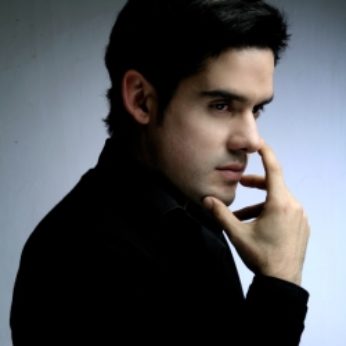Composer: Antonin Dvořák (b. 1841 - d. 1904)
Performance date: 02/07/2014
Venue: Bantry Library
Composition Year: 1870
Duration: 00:26:13
Recording Engineer: Richard McCullough, RTE
Instrumentation Category:Piano Quartet/Piano Quintet
Instrumentation Other: pf, 2vn, va, vc
Artists:
Zemlinsky Quartet (František Souček, Petr Střížek [violins], Petr Holman [viola], Vladimír Fortin [cello]) -
[quartet]
José Gallardo -
[piano]

In
the 1860s when Dvorák was in his twenties and
attempting to find his musical voice, the whole of
became overwhelmed by the music of Wagner; none more so than Dvorák.
Fortunately he came to realise that the influence of Wagner was not always entirely
desirable and, as a result, he tore up and burned many of his early works. In these years, as Dvorák ruefully
observed he did not lack for paper to
keep warm. Indeed he believed he had burnt this early piano quintet. It had been performed in
criticised. He rediscovered it in 1887 and realised that it contained much of
value. He extensively revised it; substantially reducing the first two
movements. So pleased was he with the result, that he immediately set out to compose
a second piano quintet. This became the much better known Second Quintet,
confusingly also in A major.
A
major was one of Dvorák’’s favourite
keys. At least since Mozart, works in A major have been largely sunny, lyrical
and optimistic. They contain passion and drama but not despair and Dvorák
sticks
to this pattern here. The Quintet opens with the main theme of the first movement
played slowly and quietly in octaves by the piano. It has both grandeur and charm especially
when taken up by the strings. Soon the music accelerates with forte arpeggios
from the piano and the main theme is developed in a stormy linking passage.
The
second subject is introduced over a piano accompaniment which could have from
Schubert’s Trout soon to be followed
by a haunting chromatic motif which certainly could not have done so. The
development drives forward with some stormy climaxes alternating with quieter,
slower but harmonically dramatic passages. The recapitulation begins with the
main theme played in unison by the strings over pounding piano chords. Dvorák
considerably
shortened this part of the movement in his 1887 revision. There is no repeat of
the Trout motif, the music drives on
to a resounding conclusion.
The
second movement again opens with the piano which introduces the beautiful, calm,
quietly contemplative main theme. This
is repeated in decorated form by the cello and is further developed throughout
the movement where it does not always remain either calm or contemplative. Here the Wagnerian modulations suit the
material perfectly. The movement ends quietly and sublimely with a very short
but exquisite coda.
The finale also acts as a scherzo. It is a
rousing bohemian country dance. Its rumbustious energy shocked the
already taken exception to some of the bold modulations in the earlier two
movements. The mischievous main theme, a
sturdier drinking song and syncopated cross rhythms all flash by. The
uninhibited high spirits did not prevent Dvorák from using Wagnerian
devices to add spice to this delightful romp, but there is no tragic longing
and desire here. This finale is entirely about having a (very) good time.
Copyright © 2024 West Cork Music. All rights reserved.
Designed and developed by Matrix Internet